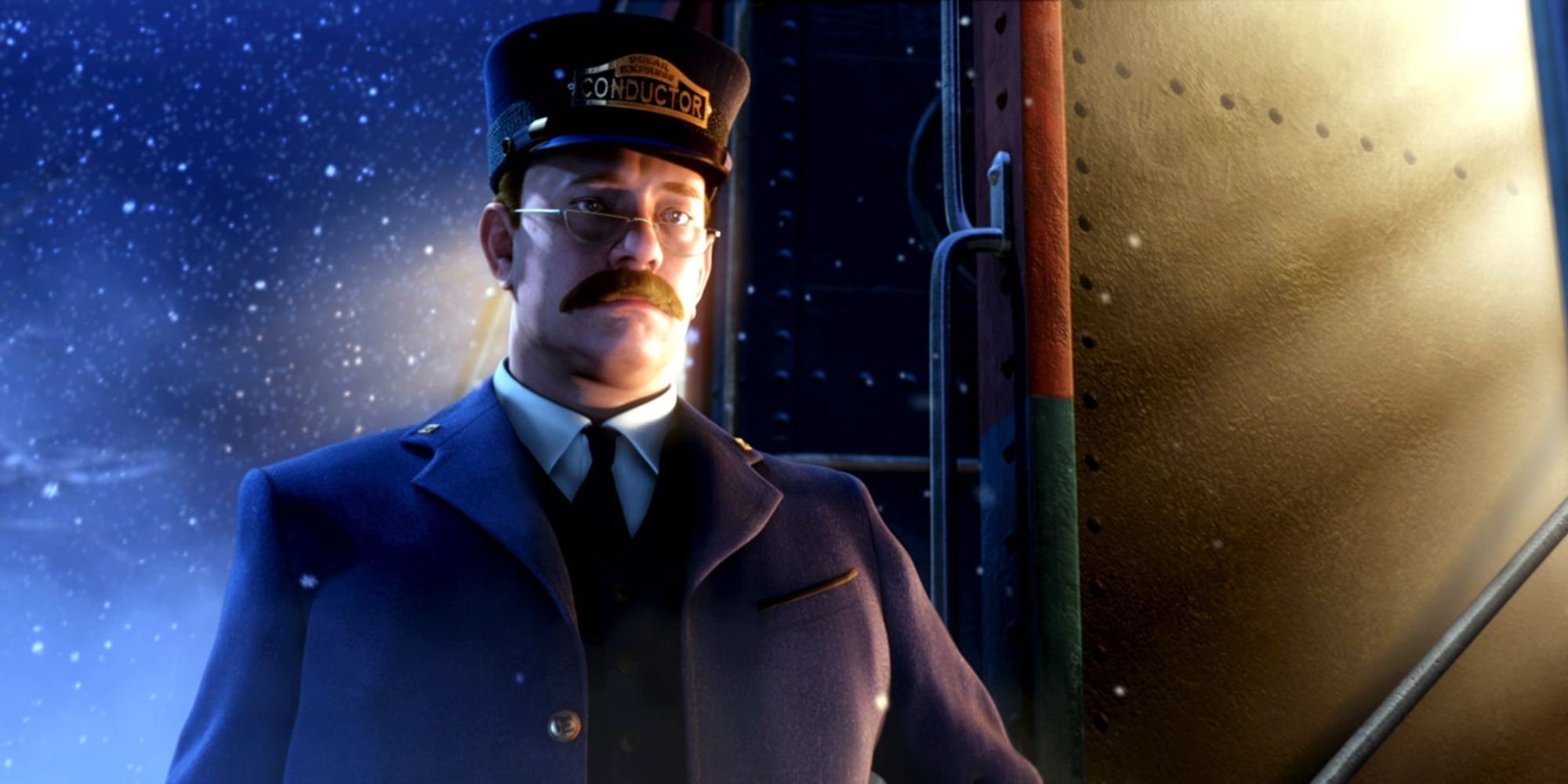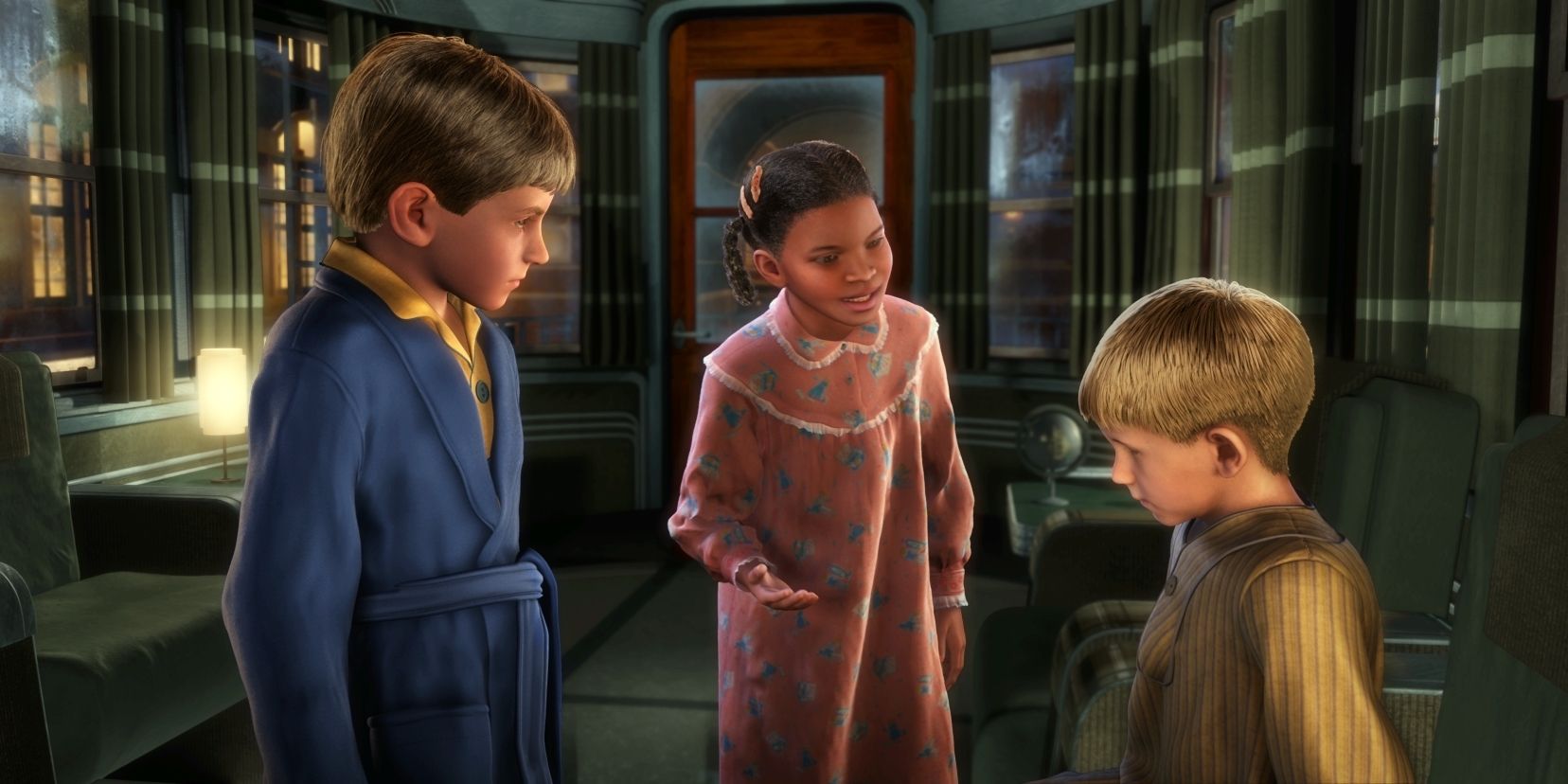
The Evolution of Animation: The Polar Express and Its Sequel

Exploring the advancements in animation and the potential for The Polar Express 2 to surpass its predecessor.
The Groundbreaking Animation of The Polar Express
The world of animation has seen remarkable advancements over the years, paving the way for visually stunning and captivating cinematic experiences. One such milestone in the realm of animated films was Robert Zemeckis' 2004 Christmas movie, The Polar Express. This enchanting tale, based on the beloved children's book by Chris Van Allsburg, introduced audiences to a mesmerizing world brought to life through the innovative use of motion capture computer animation. Starring an ensemble cast including Tom Hanks, Daryl Sabara, and Nona Gaye, The Polar Express captured the hearts of viewers with its magical journey to the North Pole on Christmas Eve.
The conductor standing beside the train in The Polar Express (2004)
The groundbreaking animation in The Polar Express marked a significant leap in the evolution of filmmaking, as it was the first film to entirely employ motion capture technology. This pioneering approach allowed actors to portray multiple characters within the film, showcasing the versatility and creativity made possible by this innovative technique. Although the film received mixed reviews and faced challenges at the box office, its impact on the cinematic landscape remains undeniable, particularly in the realm of animation and visual storytelling.
Hero Boy, Hero Girl, and Billy in The Polar Express
The Advancements in Animation Technology
Since the release of The Polar Express, the world of animation has witnessed unprecedented advancements in technology and visual effects. The evolution of CGI, motion capture, and digital animation has reshaped the possibilities for creating immersive and lifelike animated worlds on screen. The progression of animation techniques has led to a significant improvement in the realism and visual appeal of animated characters and environments, elevating the overall viewing experience for audiences.
The sequel to The Polar Express presents a unique opportunity to harness the latest innovations in animation technology, offering a visually stunning and refined portrayal of the enchanting tale. With the passage of two decades since the original film, The Polar Express 2 stands at the forefront of animation's evolution, poised to deliver an awe-inspiring visual spectacle that surpasses the boundaries of its predecessor. The advancements in animation technology have unlocked the potential for the sequel to captivate audiences with its breathtaking visuals, immersing them in a world of wonder and magic like never before.
A New Era of Visual Storytelling
The landscape of visual storytelling has undergone a remarkable transformation, fueled by the relentless pursuit of pushing the boundaries of creativity and innovation. The Polar Express 2 arrives at a time when animation has evolved to unprecedented heights, offering a compelling narrative woven seamlessly with captivating visuals. This convergence of storytelling and technology presents an opportunity for the sequel to transcend the limitations of its predecessor, delivering an unforgettable cinematic experience that resonates with audiences of all ages.
As The Polar Express 2 embarks on its journey to enchant audiences once again, the focus on storytelling and character development takes center stage, complemented by the dazzling advancements in animation. The sequel's visual narrative is poised to captivate viewers with its seamless blend of cutting-edge technology and heartfelt storytelling, ushering in a new era of visual splendor and narrative depth in the realm of animated filmmaking.










